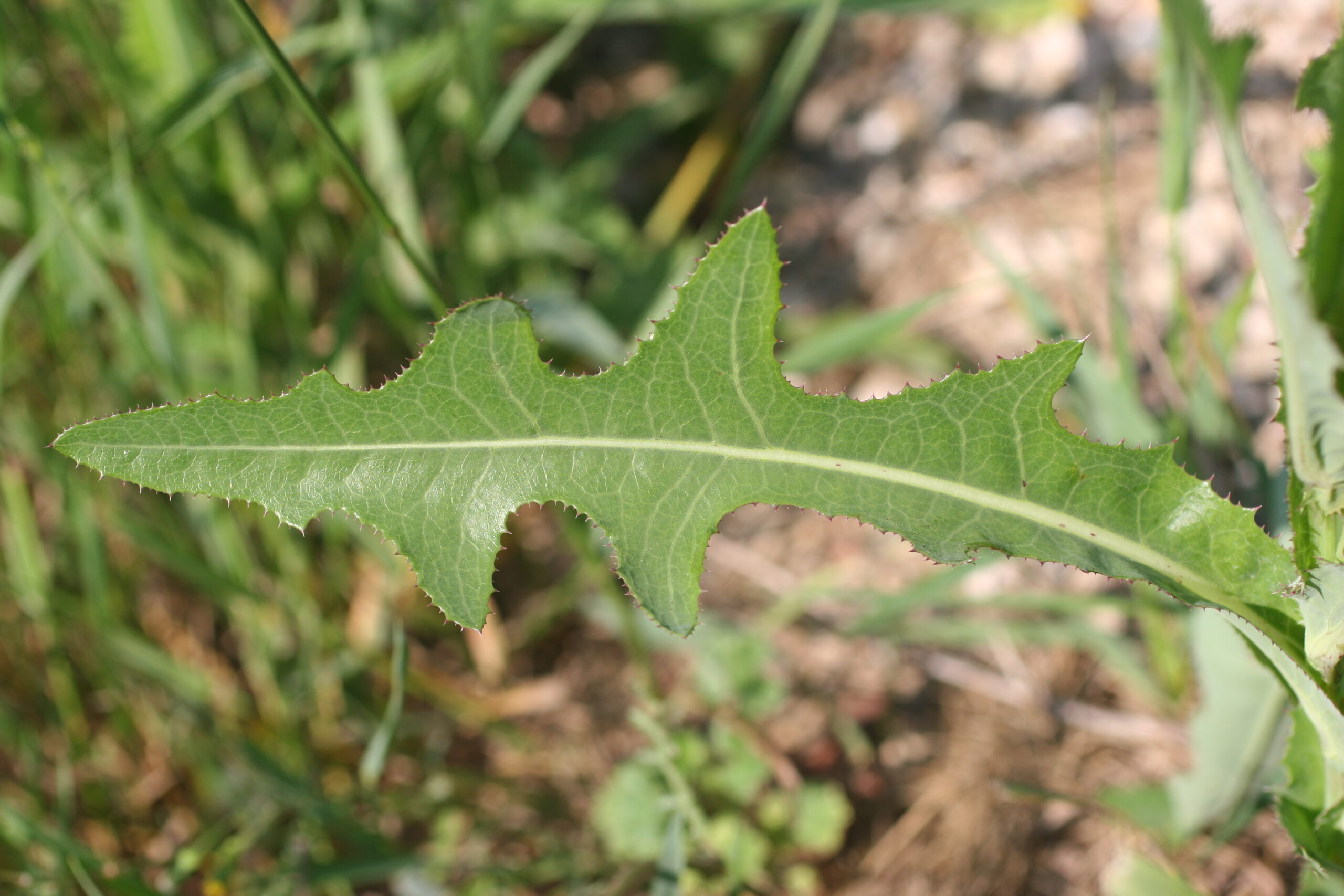
Know Your Enemy – Perennial Sow-Thistle
Lately, perennial sow-thistle (Sonchus arvensis) plants have been easy to find. In Saskatchewan, this weed is designated as a Noxious Weed under The Weed Control Act. Like any other weed, perennial sow-thistle plants can compete with crops for water, nutrients and sunlight. It can also be a host for aster yellows.
The first step to a weed control plan is to know the enemy.
As the name tells us, perennial sow-thistle is a perennial plant. Perennials are long-lived plants that can survive for many growing seasons. Perennial sow-thistle is a deep-rooted plant that reproduces by seed and vertical and horizontal roots.
Reproduction by Seed:
- Optimal germination temperature is 25 C to 30 C. Below 20 C and above 30 C, germination is poorer.
- Germination does not start until soils have warmed. In Saskatchewan, most seedlings do not emerge until mid to late May and germination can continue until late July.
- The optimal soil depth for emergence is up to 0.5 centimetres, but seedlings can emerge from up to three centimetres deep.
- Seeds are viable in the soil seedbank for three to six years but the majority of seeds germinate within a year.
- Flowering to seed maturation takes about 10 days.
- About 30 seeds are formed per head. Plants usually have multiple heads and there can be up to 50,000 seeds per square meter. The number depends on the competition with other plants and the environment.
- Seeds can also continue to mature on stems that have been mowed if the tissue remains moist.
- Seed production may be poor in isolated patches because plants cross pollinate and cannot self-pollinate.
Spread by Roots:
- Plants can colonize new areas rapidly and survive disturbance because of spread by the root system. A single plant can form a large patch of stems using this type of spread.
- Horizontal roots start to develop at the four leaf stage. After one month, plants usually have seven to eight leaves and roots have spread sideways ten to 15 centimetres. At four months, the roots are 60 to 100 centimetres long and up to 50 centimetres deep. These spreading roots are usually found five to 12 centimetres deep.
- Vertical roots can penetrate two meters deep and can produce vegetative buds that can form new underground growth up to 50 centimetres deep.
- New shoots develop from buds that overwinter on vertical or horizontal roots or the base of the stem. These new shoots develop from mid to late summer and usually develop in the top ten centimetres of soil but emergence below ten centimetres is possible.
Options for Control:
The best approach to controlling this weed is to use a combination of chemical and cultural methods to reduce competition with crops, prevent flowering and reduce the ability of the roots to spread.
Herbicides:
- Carbohydrate movement, to the roots from the leaves, occurs during the rosette stage and resumes from the rosette leaves after flowering. Control activities should take place during these times if possible.
- If a plant only had one shoot, carbohydrates moved readily through the root system. If more than one shoot was present on a root branch, movement was primarily in the root tissue between the shoots.
- There are only seven different active ingredients in herbicides that control perennial sow-thistle and one is no longer manufactured. Application timing ranges from two leaf to 15 centimetres tall or wide. Two cereal herbicides suppress this weed.
- A number of products have top growth control or top growth suppression of perennial sow-thistle. While the roots are not necessarily killed using these products, above ground growth reduction will limit the ability of the plant to provide resources to roots in the fall to survive the winter.
- Post-emergent herbicide application timing may miss the seeds that germinate well into the growing season.
- Make sure to check recropping restrictions, especially for fall applied products and in drier growing seasons.
Cultural Control
- Tillage usually reduces perennial sow-thistle stands but the level of impact varies depending on what stage of growth the weed is in and the type of tillage. To reduce the reproductive ability of the roots, tillage should take place at the seven to nine rosette leaf stage. Less than ten percent of root sections produced shoots if buried 30 cm deep. Increasing root breaking can result in greater use of food resources when shoots develop but this must be deep enough that shoots cannot make it to the surface.
- If you are using tillage to control perennial sow-thistle in the fall, the initial operation may spread small pieces of root out. These pieces can produce entirely new shoots that need to be controlled. Root sections less than one centimetre can result in plants that flower within a year. Multiple tillage operations may be needed to kill these new shoots and prevent them from providing carbohydrate to the roots.
- Mowing is less effective than tillage to reduce populations but removal of stems before flowering may be useful.
- Any practice used to optimize plant stand and only provide nutrients to the crop will help crops be competitive with this and other weeds.
- Perennial sow-thistle is palatable to cattle and sheep and pasturing land can be used to reduce stands.
- Spring cultivation followed by the establishment of perennial grasses or alfalfa has reduced populations up to 90 per cent.
For more information, please refer to the 2020 Guide to Crop Protection or contact your local crops extension specialist.
For the latest information and for more updates on everything Kindersley ‘Like’ the Kindersley Social Facebook page below…








































